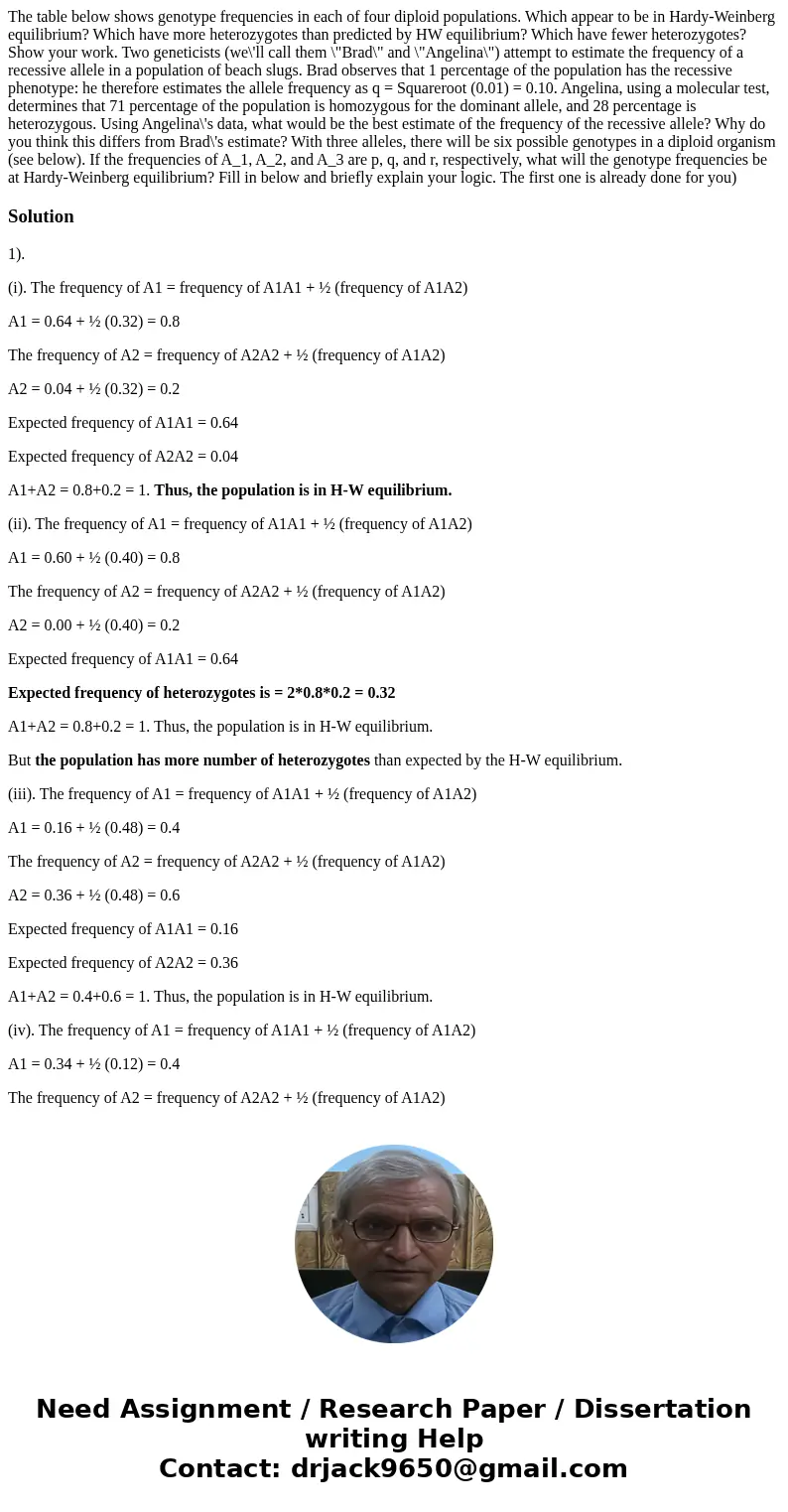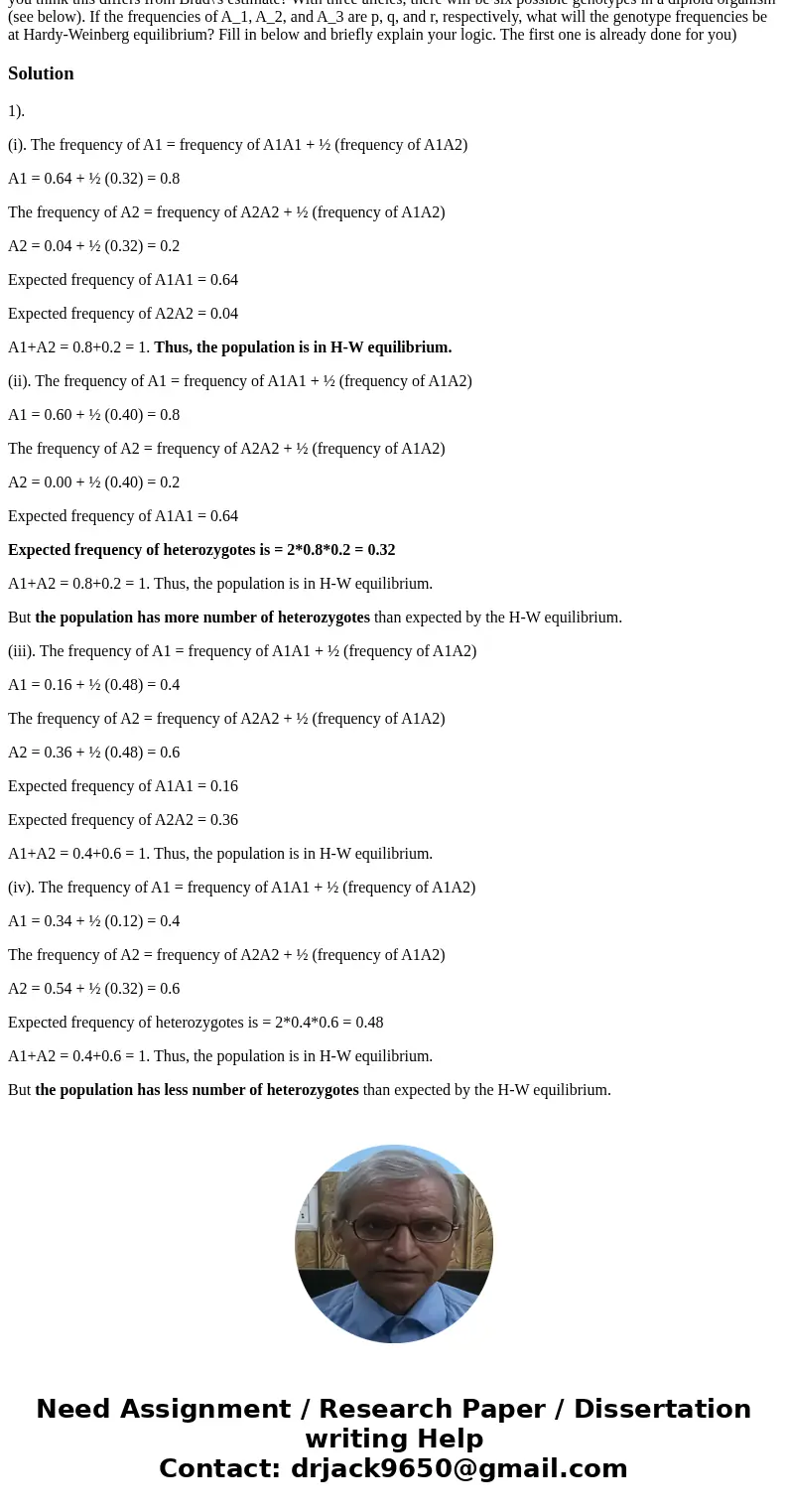The table below shows genotype frequencies in each of four d
Solution
1).
(i). The frequency of A1 = frequency of A1A1 + ½ (frequency of A1A2)
A1 = 0.64 + ½ (0.32) = 0.8
The frequency of A2 = frequency of A2A2 + ½ (frequency of A1A2)
A2 = 0.04 + ½ (0.32) = 0.2
Expected frequency of A1A1 = 0.64
Expected frequency of A2A2 = 0.04
A1+A2 = 0.8+0.2 = 1. Thus, the population is in H-W equilibrium.
(ii). The frequency of A1 = frequency of A1A1 + ½ (frequency of A1A2)
A1 = 0.60 + ½ (0.40) = 0.8
The frequency of A2 = frequency of A2A2 + ½ (frequency of A1A2)
A2 = 0.00 + ½ (0.40) = 0.2
Expected frequency of A1A1 = 0.64
Expected frequency of heterozygotes is = 2*0.8*0.2 = 0.32
A1+A2 = 0.8+0.2 = 1. Thus, the population is in H-W equilibrium.
But the population has more number of heterozygotes than expected by the H-W equilibrium.
(iii). The frequency of A1 = frequency of A1A1 + ½ (frequency of A1A2)
A1 = 0.16 + ½ (0.48) = 0.4
The frequency of A2 = frequency of A2A2 + ½ (frequency of A1A2)
A2 = 0.36 + ½ (0.48) = 0.6
Expected frequency of A1A1 = 0.16
Expected frequency of A2A2 = 0.36
A1+A2 = 0.4+0.6 = 1. Thus, the population is in H-W equilibrium.
(iv). The frequency of A1 = frequency of A1A1 + ½ (frequency of A1A2)
A1 = 0.34 + ½ (0.12) = 0.4
The frequency of A2 = frequency of A2A2 + ½ (frequency of A1A2)
A2 = 0.54 + ½ (0.32) = 0.6
Expected frequency of heterozygotes is = 2*0.4*0.6 = 0.48
A1+A2 = 0.4+0.6 = 1. Thus, the population is in H-W equilibrium.
But the population has less number of heterozygotes than expected by the H-W equilibrium.


 Homework Sourse
Homework Sourse